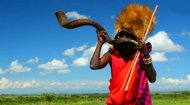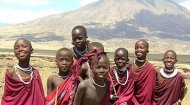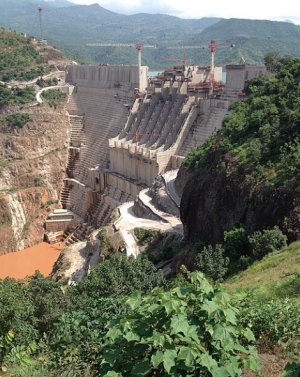Lake Turkana FactsLake Turkana Facts, Map and VideoTags: Lake Turkana, Lake Turkana Facts, Lake Turkana Map, Lake Turkana Inlet and Outlet, Why is Lake Turkana Important, Lake Turkana Video |
|
Lake Turkana |
Lake Turkana |
Lake Turkana | Lake Turkana |
|

Among the most iconic finds is "Turkana Boy" (officially KNM-WT 15000), a remarkably complete Homo erectus skeleton discovered in 1984. This nearly 1.6-million-year-old fossil provided unprecedented insights into the size, growth, and bipedal locomotion of our early ancestors. Other pivotal discoveries include Australopithecus anamensis, believed to be one of the earliest hominins to walk upright, and Kenyanthropus platyops, a 3.5-million-year-old fossil challenging existing evolutionary timelines. The basin's sedimentary layers, continuously exposed by erosion, act as a chronological archive, preserving the remains of countless extinct animals and hominins, making it an indispensable outdoor laboratory for paleoanthropologists. Despite its harsh, alkaline environment, Lake Turkana supports a surprisingly rich and diverse ecosystem. It is a vital habitat for one of Africa's largest populations of Nile crocodiles, with breeding grounds found on Central Island. The lake's waters teem with fish, including the formidable Nile perch, various species of tilapia (some endemic to Turkana), and catfish. These fish form the basis of a thriving food web, attracting a wide array of birdlife. Lake Turkana is a critical stopover and breeding ground for numerous migratory bird species, including flamingos, pelicans, cormorants, and various waders. Its shores and islands support significant populations of water birds, making it a designated Important Bird Area. While the surrounding arid scrubland might appear barren, it is home to resilient species of antelopes, zebras, and gazelles, alongside specialised desert-adapted plants. The entire Lake Turkana National Parks system, comprising Sibiloi, Central Island, and South Island National Parks, is recognised as a UNESCO World Heritage Site, underscoring its immense natural value. The shores of Lake Turkana have been home to various indigenous communities for millennia, their lives intimately intertwined with the lake's rhythms. The Turkana people, a nomadic pastoralist community, are the most numerous, known for their distinctive culture, elaborate adornments, and deep connection to their livestock. Other groups include the El Molo, Kenya's smallest ethnic group, who traditionally relied solely on fishing and hunting crocodiles and hippos from their papyrus rafts; the Gabbra; the Rendille; and the Dassanech across the Ethiopian border. These communities face significant challenges, including the harsh climate, limited access to resources, and the impacts of external pressures. Whilst Lake Turkana now has no outlet, its main source of replenishment of the twelve rivers that flow into the lake, is the River Omo, accounting for between 80-90% of its influx. However, the government of Ethiopia is constructing the huge Gibe III Hydroelectric Dam (left) on that river, raising fears that Lake Turkana may dry up, with serious implications for an already water-scarce Kenya, including increased salinity, and devastating impacts on the lake's ecology and the livelihoods of downstream communities who depend on its resources. Its second-largest inflowing river, the Turkwel River, is also being dammed for hydroelectric power generation. The other main tributary is the River Kerio. Another pressing threat to Lake Turkana is climate change, with its associated droughts and increased evaporation, further exacerbating these vulnerabilities, jeopardising the delicate balance of this unique ecosystem. Lake Turkana stands as a testament to the Earth's enduring power and the resilience of life in extreme environments. It is a natural wonder that tells the story of our origins, supports a vibrant array of life, and sustains ancient cultures. However, its future hangs in the balance, threatened by large-scale development and a changing climate. Protecting the Jade Sea requires a concerted global effort, balancing development needs with environmental conservation and safeguarding the heritage of both humanity and the natural world that calls this extraordinary place home. Its continued health is not just a regional concern but a global imperative. |








